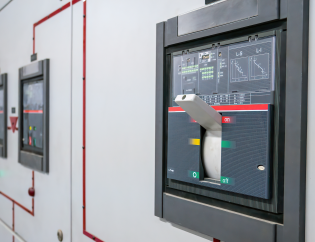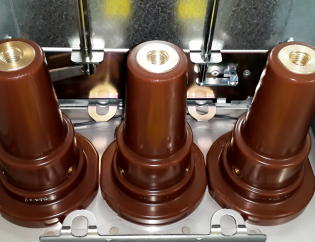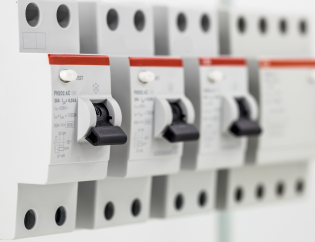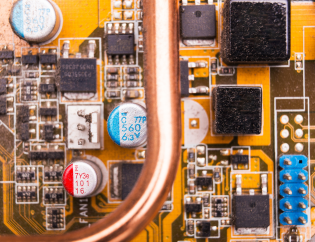 Types of Circuit Breakers
Types of Circuit Breakers
There are several types of circuit breakers available, each designed to meet specific needs and requirements. Let’s discuss each of these types in detail.
Standard Circuit Breakers
Standard circuit breakers are the most commonly used type of circuit breaker. They are designed to trip and interrupt the electrical current when a circuit is overloaded or short-circuited. These circuit breakers are easy to install and relatively inexpensive, making them a popular choice for residential and commercial applications. However, standard circuit breakers do not provide protection against ground faults, which can be a significant safety concern. Standard circuit breakers come in two types: single-pole and double-pole.
-
Single pole circuit breakers
are designed to protect a single circuit and are typically used in residential and light commercial applications. They are typically smaller in size and have a capacity of 15 to 50 amps.
-
Double pole circuit breakers
On the other hand, they are designed to protect two circuits and are typically used in commercial and industrial applications. They are larger in size and have a capacity of 50 to 600 amps. Double pole circuit breakers are also known as common trip circuit breakers as they control both the hot and the neutral conductors; the result of tripping of one of the poles in the circuit breaker will cause the other pole to trip as well.
Ground Fault Circuit Interrupters (GFCIs)
Ground Fault Circuit Interrupters (GFCIs) are designed to protect against ground faults, which occur when electricity leaks to the ground instead of flowing through the intended circuit. GFCIs can be installed in outlets, circuit breaker panels, or as portable devices. These circuit breakers are typically required in areas with a high risk of electrical shock, such as bathrooms, kitchens, and outdoor areas. GFCIs effectively reduce the risk of electrical shock, but they do not protect against other types of electrical hazards.
Arc Fault Circuit Interrupters (AFCIs)
Arc Fault Circuit Interrupters (AFCIs) is a type of circuit breaker designed to detect and interrupt arcing faults, which occur when electricity jumps through the air between two conductors. AFCIs can be installed in circuit breaker panels or as an outlet device. These circuit breakers are an effective way to reduce the risk of electrical fires caused by arcing faults. However, AFCIs are not required in all areas and are typically only used in new construction or during major renovations.
Combination Arc Fault Circuit Interrupters (CAFCIs)
Combination Arc Fault Circuit Interrupters (CAFCIs) are a combination of GFCIs and AFCIs in one unit. These circuit breakers provide protection against both ground faults and arcing faults, making them a more comprehensive solution for electrical safety. CAFCIs are typically used in residential and commercial settings and are required in some areas.
Importance of Circuit Breakers
Circuit breakers plays a critical role in ensuring the safety and reliability of electrical systems. In terms of safety, circuit breakers protect against electrical fires and shock. They are designed to trip and interrupt the electrical current when a circuit is overloaded or short-circuited, preventing damage to the electrical system and reducing the risk of electrical fires. Additionally, circuit breakers provide protection against electrical shock by interrupting the electrical current when a ground fault is detected.
In terms of convenience, circuit breakers are easily resettable, reducing the need for expensive electrical repairs. If a circuit breaker trips, it can be quickly and easily reset, restoring power to the affected circuit without needing a costly repair.
Circuit breakers also play an essential role in energy efficiency by preventing the overloading of electrical systems. This helps to improve overall energy efficiency by ensuring that electrical systems are not being overworked, which can lead to wasted energy and increased costs. Additionally, by preventing overloading and short-circuiting, circuit breakers help to ensure that electrical systems operate at their most efficient level, reducing the risk of power outages and improving overall energy efficiency.
Conclusion
In conclusion, circuit breakers play a critical role in ensuring safety and energy efficiency. Standard circuit breakers are the most commonly used type, but GFCIs, AFCIs, and CAFCIs are also available to provide additional protection against ground and arcing faults. If you’re looking to upgrade your electrical system, it is essential to consider the different types of circuit breakers available and choose the one that best suits your needs.
If you’re concerned about the safety and efficiency of your electrical system, it’s important to ensure that your circuit breaker is in good working condition. To ensure the best protection for your home, considers scheduling an inspection with a qualified electrician. They can help you determine the appropriate type and size of circuit breaker for your needs and ensure that it is properly installed and maintained. Don’t wait, take action today to ensure the safety and reliability of your electrical system with the help of an ECSKSA professional.
Do you have a question in your mind? If so, make sure to fill out the form below!











